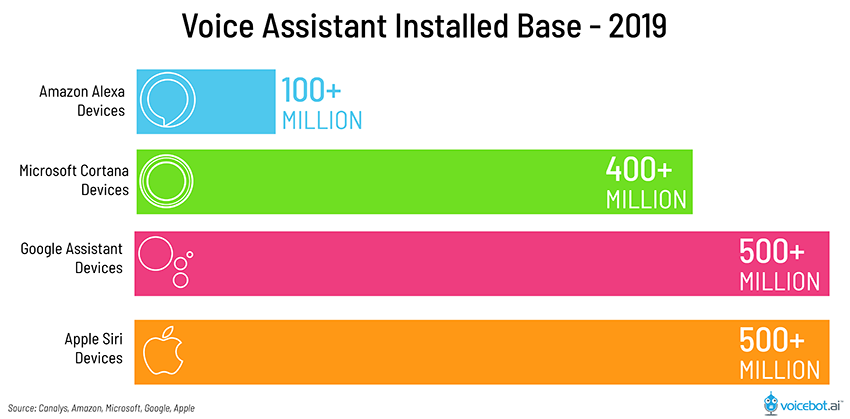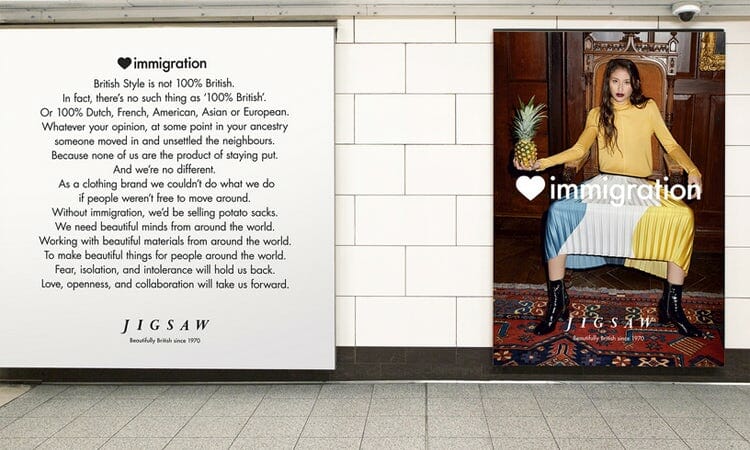
Last week, I finally concluded my latest thought series of UK seminars in Birmingham after starting way back in January. These seminars were helping to share my thoughts and educate a few marketers and content creators along the way about the latest trends I have noticed emerging.
Although they are hugely tiring to write from scratch, I do like to get out and meet people and stay on top of the latest developments in social, and in the last twelve months there have been some fascinating bits and pieces going on.
So rather than coming out and speaking to everyone on the planet, I thought it would be best to share this on my blog. I hope you enjoy them.
Seven big things that happened in 2018
Before I went into current trends, I covered seven key events from 2018 which included:
- Stories growing 15 times faster than feed content
- The great Facebook algorithmic update – peer to peer content given a huge boost
- GDPR hitting the headlines (and then falling flat – yes I still get spammy SEO emails which are going to change my life)
- The Cambridge Analytica scandal (and how we were all shocked that Facebook isn’t being nice with our data)
- Snapchat takes a tumble on the stock exchange – down 55% – nuff said.
- IGTV launches to the masses in June
- Shoppable content goes global
The Ever-Evolving Social Algorithms
During this year’s seminars, I discussed the ever-evolving algorithms on three of the most influential social platforms: Facebook, Twitter, and Instagram.
- Facebook’s algorithm typically priorities content which stimulates a conversation between friends and family, as well as links shared over Messenger and live videos as they typically receive more interactions than other items of content.
- The credibility of a user – found through the completeness of their page, their history of sharing content etc. also plays a key factor in ranking.
- Markdowns have also become commonplace for clickbait posts and channels particularly asking people to ‘like, comment or share’ content.
- Similarly, Twitter favours profile credibility in its algorithm but has a number of restrictions to this.
- Timing is heavily weighted across the platform alongside other components, including the 280-character limit which helps increase engagement rates.
- Twitter also prioritises tweets as profiles you engage with the most will show first whilst native content takes precedence over links to other sites.
- Instagram’s algorithm shows a post initially to a select group of followers to gauge their engagement before being passed further, with the algorithmic credibility of a post increasing the longer a user spends on it.
- Higher engagement on your own profile will increase through posting regularly and actively engaging with other people’s content. This shows the change in trends as, whilst #hashtags still work, they are mostly for the Explore page.
A running theme running through social media in 2019
Across all of social an overarching theme of re-building trust runs heavily through everything. The latest data tells us users are seeing straight through clickbait posts and strong corporate messaging, whilst 60% of people admit to no longer trusting the social networks due to the rise of ‘fake news’ and data manipulation.
After a year packed with social scandals, from big fake news cases to the Cambridge Analytica crisis, I predict 2019 and the coming years will be all about building online trust.
A strong example of this trust working both ways is something I have noticed through the rise of micro-influencers and ensuring you do not fall into ‘The Influencer Trap’. This is something I have spotted over the last 18 months where influencers fraudulently fake partnerships to get better fees. Now there have always been dodgy follower numbers going on but recently I have seen fake partnerships on profiles – just to inflate prices to the next tier of brands and their partnerships.
My top three things to watch out for when looking to work with an influencer are:
- Influencers buying followers (this has been going on since 2008)
- Influencers falsely ‘advertising’ product, or purposefully making posts vague
- Influencers making false brand claims
Trust has also created a large rise in ‘brand activism’ across the globe. I have worked in PR since 1999 (coughs) and I used to work with BT on its CSR team right back in 2004 and thankfully CSR is still around on social media now in 2019.
Social good campaigns will likely become a more popular this year. This is when a brand creates a campaignpromoting a product by involving a social action, a bigger idea, or simply a reaction to a relevant topic. Whether it’s a response to a political decision, or the support of a cause, many brands have decided to showcase their social responsibility through their campaigns.
An example of this form of brand activism can be seen through Jigsaw who created one of the most powerful campaigns of recent years using trending topics to support its ad. The rise of hate crimes in the UK was the reason that the brand decided to highlight the importance of diversity. The message of the campaign discussed how Jigsaw relies on materials across the world to create the final products, reminding everyone to be open and tolerant.
My top 13 social media trends in 2019 are:
- Artificial Intelligence – The next big thing in improving customer experience, it aims to form faster responses to customers. Chatbots are becoming more and more popular but 70% of chatbot engagements fail and require a human interaction. The big game changer here though is AI in paid social – this is going to change the face of paid social as we know it.
- Video – The main driving factor behind 85% search traffic in the US, social videos generate 1200% more shares than text and image combined. Services such as Facebook Watch are changing how we use video and watch it. Expect more social channels to bid for TV channels or sports rights. Consumers now expect cinematic style videos now that are both punch and tell a story. Here is an video example my team did a few weeks ago.
- Ephemeral Social – Temporary content, such as Instagram stories are widely viewed as less static and more personal ways for brands to engage with followers on social. They have been growing 15 times quicker than feed content, they are the new way to share content. They are not quite as polished as feed posts but that is their beauty and they get better engagement and are proving hugely effective in paid social. I predicted that these would move so you can access one story for multiple platforms.
- Live Streaming – Facebook Live et al adds immediate and exclusive content which encourages consumers to comment and engage with brands. It gets 600% more engagement than other content. I think this has grown so much partly due to Facebook incentivising it and partly because we love a shout out and you can get a real life shout out on Facebook.
- Micro-influencers – Authenticity is key, and brands should be looking to work with influencers with whom their customers can relate to in everyday life – those who have built up a loyal follower-base who see them as reliable and trustworthy
- Humanising Social – Putting a genuine human face to a brand and wading in on topical events that are relevant to the brand ethos can increase engagement and brand loyalty, particularly for smaller businesses.
- Personalised Content – Consumers now appreciate more ‘effort’ from the online brands they engage, and are more likely to purchase or buy into a brand as a result. Anything which remembers your search and buying history is a must especially for remarketing purposes. Expect to see social platforms refine their optimisation offerings to provide a more personal offering to consumers – think tailored offers and personal discount codes
- User Generated Content – A great way to connect with your users, and also get new and engaging content on your feeds, UGC is viewed as more authentic and trustworthy
- Mean Social – In 2018-19 brands have been embracing negative comments and turning them into funny content showcasing the brand’s sense of humour, even turning it into product launches and viral campaigns – an example of this is KFC when it changed its chips recipe following a tweet. I love a bit of brand humour – the only problem I have with that is the fact the tweet was back in 2014. You need better listening KFC if it takes five years to improve a fry!
- Paid Social – Brands will need to focus on clever creative and laser targeted campaigns, not just generic content shoe-horned into feeds. You need to be looking at ways to automate the bidding – AI is going to change the face of this sector of digital.
- Shoppable Content – another way of improving the usability and accessibility of your channels, brands see an uplift in site visits and sales. The biggest announcement in this area came two weeks ago when Checkout was launched by Instagram. e.g. Wayfair saw 3x more click-throughs from shoppable content than basic ads
- Enhanced Social Listening – Humans can process visuals 60,000 times faster than text, insights gleaned from images. This can help inform decisions around the context in which your product is advertised and how various groups use it. If you understand that 96% of untagged brand mentions are ignored (Brandwatch). Then you are starting to see the opportunity around visual social listening which is a huge game changer, I covered that extensively here but essentially you can now train tools to find your brand or logo no matter where it is on the social web.
- Voice Control and Search – As people buy more voice-controlled devices this will be a key area where savvy content marketers will be battling as second place will effectively be nowhere. I predicted this will be the space where the next big battle will be and I feel this is actually the future of social. Read my post on that here.
So how do you put it all into action this year?
A key trial you should test on your social in 2019 is less is more. Yes, I know you may have to argue with your boss/client and that is going to be hard, but seriously less content is more in 2019. The idea of focusing on quality over quantity has caused some of the biggest brands in the UK to change their strategy, posting less frequently on their social platforms, but investing time in higher quality posts in order to have a bigger impact. After all, if you get better average engagement on your posts, your posts will go further. So I have just given you less work and it will be better quality – what’s not to like?
So I recommend moving away from daily posts and focusing on posting two to three higher quality posts each week. Each month, you can use larger piece of hero content, such as a competition, key video piece or big campaign asset, that will act as a piece of long retention evergreen content.
So there you have it, 2019 is still exciting there is lots going on and it is still about staying personal, relevant and engaging. Forget follower numbers those days are dead. Is there anything I have forgotten off my list? Let me know in the comments.

